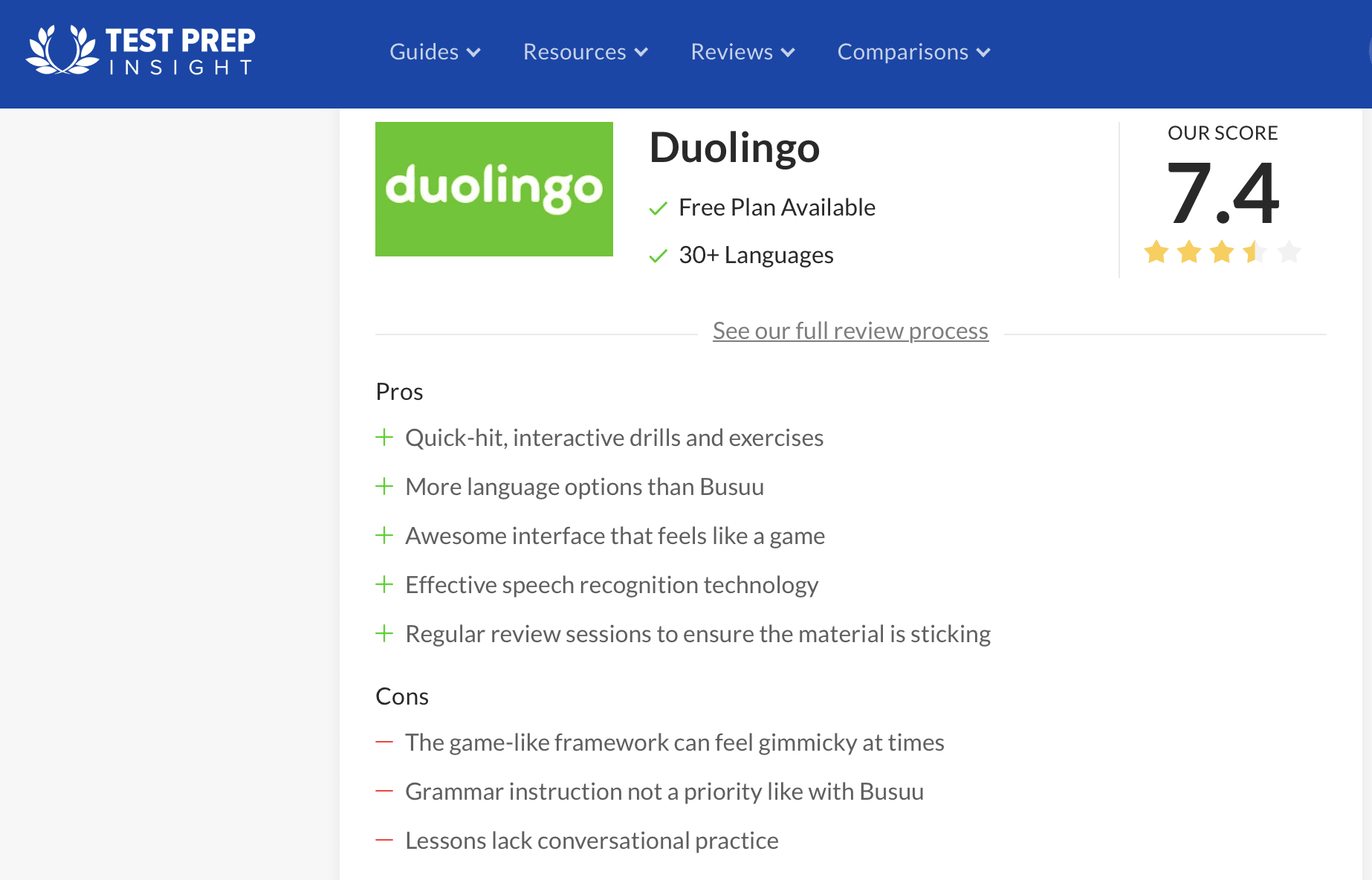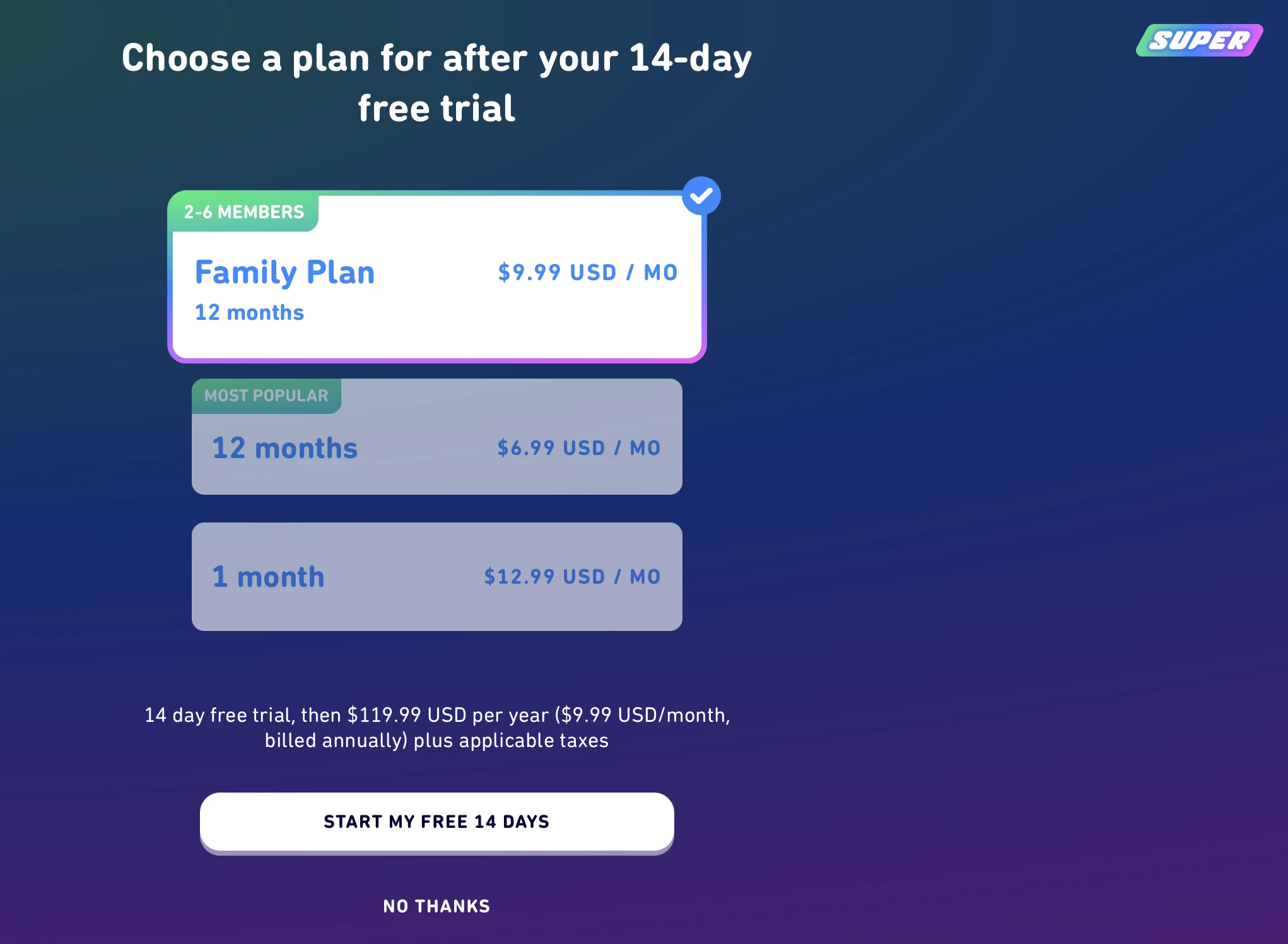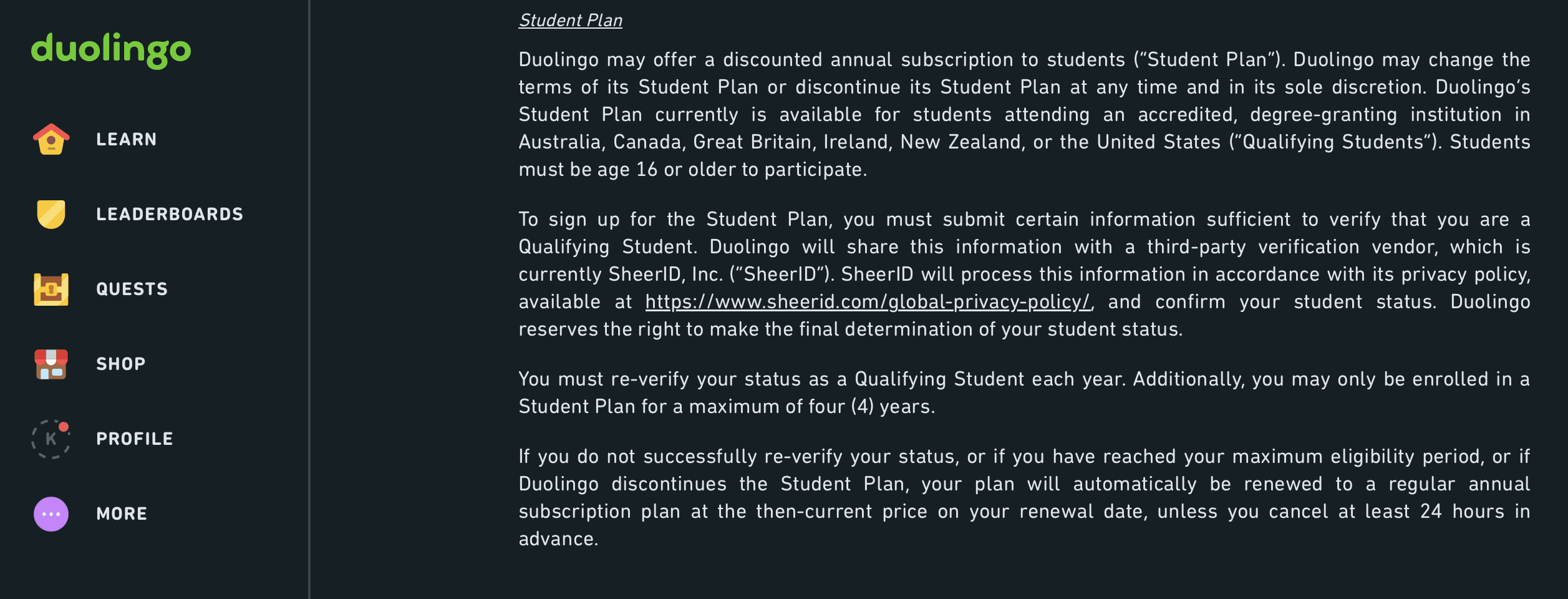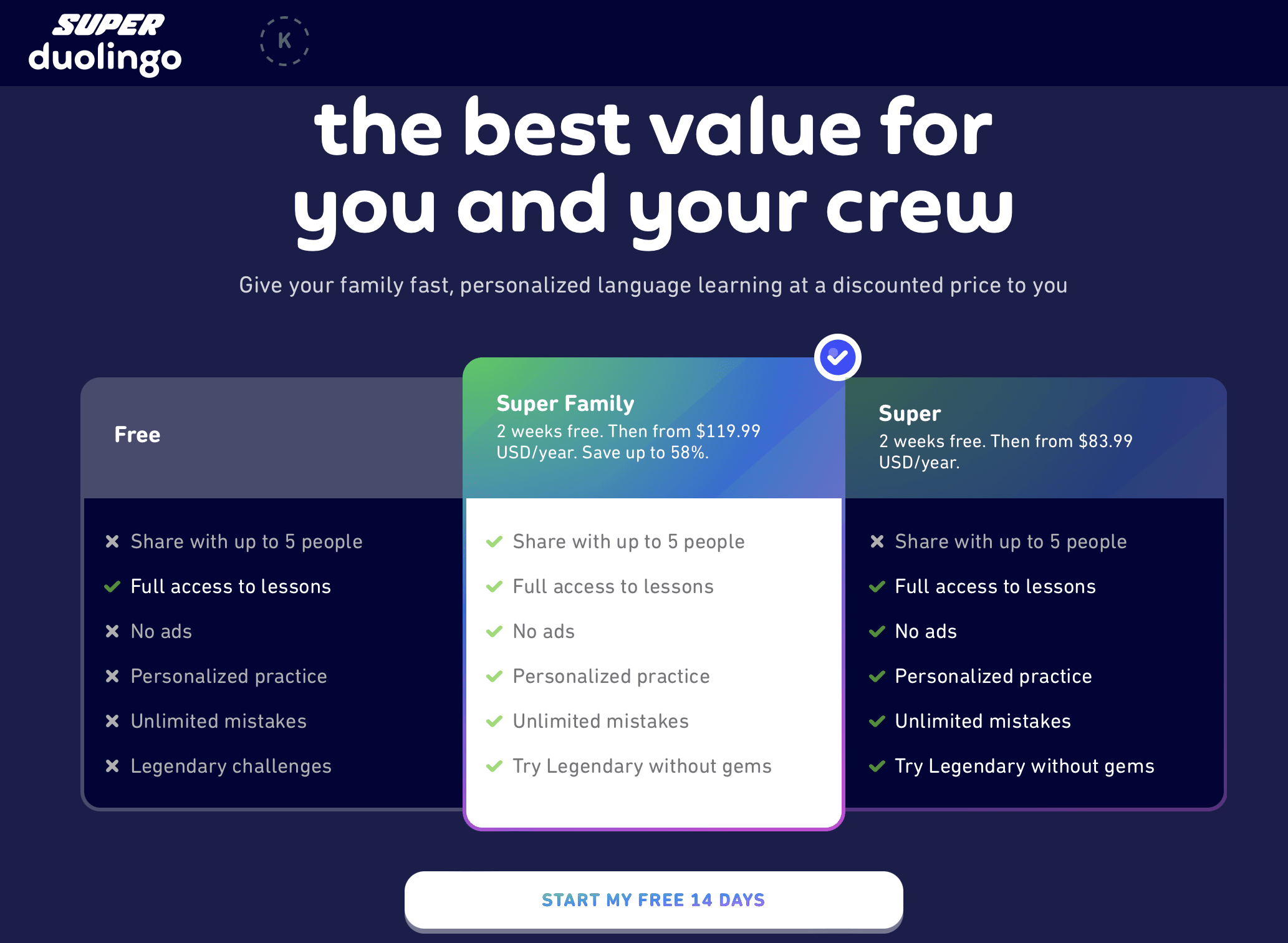Duolingo is a popular language-learning app known for its fun, gamified approach. It offers free courses in dozens of languages and also has paid plans (Super and Max) with extra features. This article will help students and parents compare Duolingo to other tutoring platforms, with reviews, pricing details, and alternatives so you can make an informed choice.
Duolingo Reviews and Testimonials
Overall, Duolingo is widely used and generally considered safe and legit. Its mobile app ratings are very high: about 4.5 out of 5 stars on Google Play (from more than 33 million reviews) and 4.7 on the Apple App Store (4.1 million ratings). Many users praise Duolingo’s free access, game-like lessons, and daily practice reminders.
For example, a Capterra user said “It is Free! Love that. I have used the free version for 7 years now… I have gotten very far in learning Spanish.” Others note its fun interface and habit-building features. These positive reviews highlight Duolingo’s strengths: bite-size drills, instant feedback, and motivating streaks.

However, Duolingo also has critics. Some users complain about frequent ads in the free version and limited content depth. For example, reviewers note that “the ads after every lesson are very distracting and disrupt my focus.” Others say lessons can feel too repetitive or gimmicky, and that Duolingo doesn’t teach grammar rules well or simulate real conversation. As another user on Capterra puts it, the app’s “lessons have no bearing on real world situations” and often contain strange example sentences.
Duolingo is praised for making learning easy and fun, but it is not a complete replacement for in-depth instruction. Review sites reflect this mix: Duolingo’s Trustpilot and Sitejabber scores are low (1.7/5 stars on Trustpilot and 2.3/5 on Sitejabber), largely due to complaints about ads and content.
In summary, Duolingo is widely used and generally safe, with stellar app store ratings. But user comments show a divide: many like the free, gamified practice, while others note shortcomings in depth, ads, or updates.
Duolingo Pricing
Pricing Range
- Duolingo Super (Plus): This ad-free plan costs about $12.99 per month in the US. (Annual and regional prices vary.) It includes perks like unlimited mistakes and offline access.

- Duolingo Max: A higher tier at $29.99 per month (around $167.99 per year). It adds advanced AI features like the “Explain My Answer” and “Roleplay” tools to Max users.
- Student Plan: Verified students can pay a lower fees.

- Family Plan: Covers up to 6 accounts for $119.99 per year (about $1.67 per person per month).

These prices come directly from Duolingo. In general, Duolingo offers a free tier with ads, and its premium subscriptions remove ads and add features. (Prices and plans can vary by country and promotions.) The Premium plans often have free trials and student discounts. For example, Duolingo often offers a 2-week free trial of Super Duolingo for new subscribers.
What Students Say About Pricing
Opinions on cost vary. Many students and parents find Duolingo’s pricing reasonable given what they get. One learning blog notes that Super Duolingo adds only extra support (no-ads, offline mode) on top of the already free content, and says it’s “well worth the price” for enthusiastic learners. On forums, some users say paying $12–13 per month is fine to get rid of ads and use advanced features.
Others, however, complain about confusion in discounts. For example, one Reddit user wrote: “I subscribed two weeks ago for $59.99 for a year, but now they’re saying this is 60% off and the price is… $59.99. So where’s the sale?!” Another noted Duolingo tried to charge $83 for a renewal unexpectedly. In short, while many feel the paid plans can be worth it for the extra benefits, some users find the pricing and promotional deals confusing or unfair.
Hidden Costs
There are few “hidden” fees beyond the subscription price. You must watch for trial cancellation rules. Duolingo offers a 14-day free trial for Super Duolingo, but you must cancel at least 24 hours before it ends to avoid any charge. Also, local taxes or VAT may apply based on your location. Other than that, there are no sign-up or cancellation fees (just the recurring subscription).
Note: the Duolingo English Test is a separate paid exam if you need language certification, but it is not part of the regular courses.
How Duolingo’s Pricing Works
Duolingo subscriptions can be purchased via credit card, Google Play, the App Store, or PayPal. You choose the plan (monthly or annual) during sign-up. Family and student plans require account verification (Duolingo uses services like SheerID for student discounts). Payments auto-renew each billing period until you cancel. Group plans allow shared access for multiple learners.
Student users may qualify for the cheaper student rate. Duolingo also runs occasional sales (for example, Black Friday deals up to 50% off in 2024), so it can be worth watching for promotions.
Free Trial
Duolingo offers a free trial of its Super Duolingo plan (typically 2 weeks)}. During this period you get all the premium benefits (no ads, unlimited hearts, etc.). If you cancel within the trial (at least 24 hours before it ends), you won’t be charged. This lets you test the features risk-free. Note that after a trial, your card is automatically charged if you don’t cancel in time.
Refund Policy
Duolingo’s official policy is strict: “generally, all charges for in-app purchases are non-refundable, and there are no refunds or credits for partially-used periods”. In practice, this means Duolingo itself does not provide refunds once a subscription is bought. Instead, refunds (if any) are handled by the app store or payment processor.
However, Duolingo does note that if a subscription is somehow refunded, any related taxes will also be refunded. Overall, it’s safest to treat the paid plan as non-refundable after purchase and double-check before buying.
Duolingo Alternatives
Even with Duolingo’s popularity, some learners seek other platforms for different learning styles. Here are a few top alternatives:
- Babbel: A subscription-only app focused on structured, conversational lessons. Current Babbel charges pricing can be found here. It emphasizes grammar and dialogue practice more than Duolingo. Pros: well-designed grammar instruction, clear explanations. Cons: fewer languages (about a dozen), no free tier, and it’s less game-like. Babbel can be better for in-depth grammar and speaking practice, but it costs more and lacks Duolingo’s large free content.
- Rosetta Stone: A long-running immersion program. It’s expensive (hundreds of dollars or a high monthly rate), but offers a lifetime option and focuses on listening/speaking via pictures. Pros: strong emphasis on immersion and pronunciation. Cons: very costly, less interactive or fun. Compared to Duolingo, Rosetta Stone is more intense and costly but may suit learners wanting traditional immersion; Duolingo is cheaper or free with a more game-like feel.
- Preply: A live tutoring marketplace. Students pay by the hour to work one-on-one with native-speaking tutors. On average tutors earn about $18.30 per hour (rates vary widely by language and tutor). Pros: Personalized attention and conversation practice. Cons: Can be expensive, scheduling needed. If you need real speaking practice or exam prep, Preply can work better than Duolingo’s app exercises. Duolingo is automated and free, while Preply gives human interaction for a price.
- italki: Similar to Preply, italki is a platform for one-on-one language lessons with teachers or community tutors. Users set their own rates; community tutors often charge as low as $5–$10 per hour, while professional teachers can be $15–$30+. Pros: Huge range of native speakers, flexible scheduling, user reviews for tutors. Cons: You must commit time and pay per session. Compared to Duolingo, italki is not a lesson app but a tutor marketplace, better for conversation practice. Duolingo provides self-study courses, while italki connects you with people for real-time learning.
- Busuu: Another language-learning app. Busuu’s free tier is limited; its premium plan includes grammar exercises and conversation practice with native speakers. Reviews note Busuu has video clips of native speakers and grammar tips. Pros: more grammar explanation, community corrections, some speaking practice. Cons: fewer languages (12) and features behind paywall. In one comparison, Duolingo was noted to have more languages and a more polished game interface, while Busuu is stronger on grammar. Busuu can be worth considering if you want extra grammar structure, but Duolingo is generally more motivating and covers more languages.
- My Engineering Buddy (MEB): A tutoring-focused platform (mainly STEM subjects). MEB offers live tutoring in math, science, and engineering topics. Unlike Duolingo (which is language/math courses), MEB specializes in academic subjects and exam prep. Pricing on MEB is typically hourly or package-based and may be higher than Duolingo’s app. However, MEB excels in personalized one-on-one help for technical subjects, which Duolingo does not offer. For students needing help in math, physics, or engineering, MEB (with its expert tutors and targeted curriculum) can be a better fit than a language app like Duolingo.
How Duolingo Works
For Students
Students simply download the app or visit the website, sign up for an account, and choose a language course. Duolingo’s interface is very user-friendly and game-like. You start with basic vocabulary and gradually build up. The app uses “micro-lessons”: short, daily exercises in reading, writing, listening, and speaking. As you play, the app tracks your progress, awards points, and keeps streaks to motivate you.
Lessons adapt to your level, and you can practice as much or as little as you want. Scheduling is flexible – you can learn anytime you want at your own pace. The learning design is simple and active: each session covers just a few new words or grammar points, so even long lessons feel manageable. Overall, Duolingo works as a self-study tool: no teachers or fixed schedules are needed. The mobile app is polished and works offline if you have a paid plan.
For Tutors
Duolingo is not a peer tutoring platform, so there is no program where external tutors sign up to teach through Duolingo. (Duolingo did experiment with tutors in 2018-2019, but that feature was discontinued). Today, Duolingo hires its own curriculum designers and engineers, not freelance tutors. If you are an English tutor, you cannot list yourself on Duolingo. Instead, tutors might use Duolingo as a supplement for their students.
In short, Duolingo’s model is fully automated: students learn from the app, not live teachers. There’s no side for tutors to earn money like on Preply or MEB. (Some Duolingo employees have noted in public that the company is moving toward using AI instead of contract workers, reinforcing that Duolingo focuses on tech solutions, not human tutor gigs.)
Duolingo: Company Information
Duolingo, Inc. is an American educational technology company founded in 2011 by Luis von Ahn and Severin Hacker. Its headquarters are in Pittsburgh, USA, and it serves learners worldwide. The founders’ mission was to provide free, high-quality education to as many people as possible. Today, Duolingo has over 100 million monthly active users, making it one of the most popular education apps in the world.
The company offers courses in many languages, from common ones like English and Spanish to less common languages like Welsh, Irish, and even fictional ones (it once offered Klingon). It also offers courses beyond language, including a basic math course and a music-reading course.
Notably, Duolingo’s courses are all free with ads, following a freemium model; paid tiers (Super and Max) remove ads and add perks. The learning method heavily uses gamification: points, streaks, levels, and colorful visuals keep users engaged.
USP of Duolingo
Duolingo’s unique selling points include its accessibility and fun design. It was one of the first free, mobile-friendly language apps, and it emphasizes short daily practice. Users often say it’s “free and easy to use.” Its game-like lessons and immediate feedback make users feel like play. Duolingo can be used by anyone anywhere (with only a phone or computer), and its science-backed, bite-sized approach helps build habit and retention.
The app’s friendly owl mascot and colorful interface also contribute to a positive experience. In short, Duolingo stands out for giving learners a zero-cost entry point, wide language choices, and a fun learning process.
Drawbacks of Duolingo
No platform is perfect. The main drawbacks of Duolingo are well-documented by users. First, the free version has frequent ads and daily practice limits, which some users find annoying. Even in paid plans, there are ads promoting Duolingo Max. Second, Duolingo’s lessons often focus on isolated phrases or words without deep explanation. Many reviews point out that Duolingo offers little grammar instruction or real conversation practice.
Some example sentences on Duolingo can be strange or irrelevant to real life. Users also mention the relentless streak system and notifications can feel pushy or stressful. In summary, Duolingo’s weaknesses are its reliance on rote drills, ads in the free tier, and a lack of contextual grammar teaching. For serious learners, these gaps mean Duolingo often needs to be supplemented with other resources.
Comparison with My Engineering Buddy
Duolingo and My Engineering Buddy (MEB) serve very different needs. Duolingo is focused on teaching languages (and basic math/music) through an app, while MEB is a platform for academic tutoring (mostly STEM, but also humanities, business, accounting, and even languages). Where Duolingo excels at making language practice accessible and fun for beginners, MEB excels at providing one-on-one help in math, physics, engineering, etc.
For example, Duolingo’s content is self-paced software, whereas MEB connects students with live tutors for personalized lessons. MEB covers many advanced subjects and likely offers detailed problem-solving help, while Duolingo covers none of those topics. In terms of cost, Duolingo’s app can be entirely free, whereas MEB would charge hourly or package rates for tutors (often higher).
In summary, a student learning Spanish might use Duolingo, but a student needing calculus help would turn to MEB. They aren’t direct rivals: each has a unique focus. (That said, both emphasize convenient online learning and have some features like progress tracking, but the content and delivery are very different.)
Customer Support and Policies
Duolingo’s official support is via its online Help Center and email; there is no live phone support for users. The policies are fairly standard for a tech app. As noted above, subscription charges are generally non-refundable. Duolingo collects user data to personalize learning (as described in its privacy policy) and its terms of service state expected rules of conduct.
Users typically report that contacting support is not very quick, but refunds or cancellations must go through the app store. In short, Duolingo’s support is digital-only, and users should read the subscription terms carefully before purchasing.
Global Reach and Localization
Duolingo has a truly global audience. Its app and website are available in dozens of interface languages, and it offers courses for learners in over 190 countries. The Wikipedia entry notes Duolingo serves “worldwide” and has courses in many regional and minority languages. The company often adds new languages to meet demand (for example, recently it added Uyghur and Navajo).
Additionally, Duolingo runs special programs like Duolingo ABC (for children) and the Duolingo English Test (an online exam recognized globally) to extend its reach. In the Middle East, Europe, and the US, Duolingo is popular among students and travelers alike. Its content is mostly the same everywhere, but the app itself offers instructions and support in many major world languages.
Duolingo’s Future Plans
Duolingo is rapidly moving toward an “AI-first” strategy. A major development is Duolingo Max, a subscription tier that uses GPT-4 AI to create new features like “Explain My Answer” (which tells you why an answer is correct) and interactive “Roleplay” conversations. Recently, Duolingo announced 148 new courses that were generated with the help of AI, effectively doubling its course catalog in one year.
CEO Luis von Ahn wrote that Duolingo will “gradually stop using contractors to do work that AI can handle”. In an internal memo he even called the company “AI-first,” prioritizing speed of deployment of AI features. On the tutoring side, Duolingo has introduced a live “Video Call” feature (for Max users) to let learners practice speaking in real-world scenarios. This feature came after earlier experiments with live tutors (“Duolingo Live” and “PenPal”), which were ultimately discontinued.
Looking ahead, Duolingo plans to leverage AI more heavily in everything from content creation to hiring, while continuing to expand and improve its courses with new technologies.
FAQs About Duolingo
- Is Duolingo free? Yes. The core Duolingo app is free to use (with ads) for learning over 40 languages. You can learn all basic content without paying. Paid subscriptions only remove ads and add extra features.
- Is Duolingo effective? Duolingo can build basic vocabulary and reading skills, especially for beginners. Reviews are mixed, but many learners report measurable progress. Duolingo is best for consistent practice and is often paired with other resources for full fluency.
- Can Duolingo replace a tutor? Not entirely. Duolingo provides self-study lessons, not personalized tutoring. It works well for independent learners, but it can’t give tailored feedback like a human tutor. (The new Video Call feature and Duolingo Max make it a bit more interactive, but it’s still mostly an app experience.)
- How does Duolingo compare to My Engineering Buddy? Duolingo teaches languages (and basic math/music) through an app, whereas My Engineering Buddy is a live tutoring and homework help platform for hundreds of subjects. They serve different needs. If you need help with calculus or physics, MEB is more relevant; if you want to learn Spanish or French on your own, Duolingo is the choice.
- What are good alternatives to Duolingo? It depends on your goals. Babbel and Rosetta Stone are paid apps with a more traditional approach. Preply or italki are good for live tutors. For serious study, courses like Coursera or Khan Academy (for languages and other subjects) might help. Busuu and Memrise are other apps with different strengths. For STEM topics, platforms like My Engineering Buddy, Khan Academy, or tutor networks are better than Duolingo.
- Is Duolingo worth the cost? Many users think the free version is great, and the paid plans are worth it if you want no ads and extra practice. It comes down to your budget and how much time you spend learning. During promotions, it can be very affordable.
Conclusion
In summary, Duolingo offers a fun, accessible way to start learning a language on your own schedule. Its strengths are being free (or low-cost), engaging, and easy for beginners. However, it has limitations: it can be repetitive and doesn’t teach grammar deeply. Reviews reflect these trade-offs. For students who need structured or advanced lessons, or for subjects outside languages, platforms like My Engineering Buddy or other live online tutoring services may be better.
Overall, Duolingo is a valuable tool for casual or supplementary learning, especially for busy students, while alternatives like MEB provide personalized support for academic subjects. Weighing Duolingo’s pros and cons can help families decide if it fits their learning needs, or if a different tutoring solution might be more suitable.

